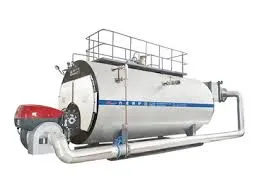- Afrikaans
- Albanian
- Amharic
- Arabic
- Armenian
- Azerbaijani
- Basque
- Belarusian
- Bengali
- Bosnian
- Bulgarian
- Catalan
- Cebuano
- China
- China (Taiwan)
- Corsican
- Croatian
- Czech
- Danish
- Dutch
- English
- Esperanto
- Estonian
- Finnish
- French
- Frisian
- Galician
- Georgian
- German
- Greek
- Gujarati
- Haitian Creole
- hausa
- hawaiian
- Hebrew
- Hindi
- Miao
- Hungarian
- Icelandic
- igbo
- Indonesian
- irish
- Italian
- Japanese
- Javanese
- Kannada
- kazakh
- Khmer
- Rwandese
- Korean
- Kurdish
- Kyrgyz
- Lao
- Latin
- Latvian
- Lithuanian
- Luxembourgish
- Macedonian
- Malgashi
- Malay
- Malayalam
- Maltese
- Maori
- Marathi
- Mongolian
- Myanmar
- Nepali
- Norwegian
- Norwegian
- Occitan
- Pashto
- Persian
- Polish
- Portuguese
- Punjabi
- Romanian
- Russian
- Samoan
- Scottish Gaelic
- Serbian
- Sesotho
- Shona
- Sindhi
- Sinhala
- Slovak
- Slovenian
- Somali
- Spanish
- Sundanese
- Swahili
- Swedish
- Tagalog
- Tajik
- Tamil
- Tatar
- Telugu
- Thai
- Turkish
- Turkmen
- Ukrainian
- Urdu
- Uighur
- Uzbek
- Vietnamese
- Welsh
- Bantu
- Yiddish
- Yoruba
- Zulu
Nov . 19, 2024 03:51 Back to list
custom stainless steel casting
The Rise of Custom Stainless Steel Casting A Modern Solution for Industry
In today’s fast-paced industrial environment, the demand for high-quality, precision-engineered components has never been greater. Among the materials that have gained significant traction is stainless steel, particularly when it comes to custom casting. Stainless steel casting provides manufacturers with the ability to create components that are not only durable and corrosion-resistant but also tailored to specific requirements. This article explores the benefits, processes, and applications of custom stainless steel casting.
Advantages of Custom Stainless Steel Casting
One of the primary advantages of custom stainless steel casting is the exceptional durability and longevity of the material. Stainless steel is renowned for its resistance to rust, corrosion, and oxidation, which makes it ideal for harsh environments such as marine, chemical, and food processing industries. In addition, custom castings can be engineered to withstand extreme temperatures and pressures, further extending the lifespan of the components.
Another significant benefit is the versatility in design that custom casting offers. Manufacturers can create complex shapes and intricate designs that would be difficult or impossible to achieve with traditional machining methods. This ability allows for greater creativity in product design and can lead to more efficient solutions that minimize waste and reduce production costs.
Moreover, custom stainless steel casting allows for the integration of various features directly into the component. This may include specific surface finishes, built-in channels for fluid dynamics, or integrated fasteners, all of which can streamline assembly processes and improve overall efficiency.
The Casting Process
The custom stainless steel casting process typically involves several key steps
1. Pattern Creation A pattern, often made from materials like wood, metal, or plastic, is created to form the mold for the casting process. This pattern replicates the exact specifications of the final product.
custom stainless steel casting

2. Mold Making The pattern is then encased in a mold material, often sand or a combination of sand and binders. The mold is designed to withstand the high temperatures involved in melting stainless steel.
3. Melting Stainless steel is melted in an induction furnace at temperatures exceeding 1,500 degrees Celsius (about 2,732 degrees Fahrenheit). This molten metal is then poured into the prepared mold.
4. Cooling and Solidification Once poured, the stainless steel is allowed to cool and solidify. This process can take several hours, depending on the thickness and size of the casting.
5. Finishing After solidification, the mold is broken away, revealing the cast product. The component undergoes finishing processes like grinding, polishing, and surface treatment to meet specific engineering standards and aesthetics.
Applications of Custom Stainless Steel Casting
Custom stainless steel castings are utilized across a wide array of industries, showcasing their versatility and adaptability. In the automotive sector, they are used for producing components such as exhaust manifolds and brackets that require strength and durability. Similarly, the aerospace industry relies on stainless steel castings for critical parts that must withstand extreme conditions.
In the medical field, custom stainless steel castings are essential for manufacturing surgical instruments and implants, where precision and biocompatibility are paramount. The food and beverage industry also benefits from custom castings, with equipment designed to handle corrosive substances safely.
Conclusion
Custom stainless steel casting stands as a pivotal technology in modern manufacturing. With its unparalleled durability, design flexibility, and application versatility, it offers a comprehensive solution to the challenges faced by various industries. As technology advances and manufacturing processes evolve, the role of custom stainless steel casting is likely to expand, solidifying its importance in creating the components of tomorrow. Whether in critical aerospace components or specialized medical tools, custom stainless steel casting will undoubtedly remain a cornerstone of innovation in industrial production.
-
8mm Thin-Walled Cast Steel Manhole Cover Pallet Bottom Ring | Durable
NewsAug.04,2025
-
Premium Cast Iron Water Main Pipe: Durable, Corrosion-Resistant
NewsAug.03,2025
-
Durable Cast Iron Water Mains | AI-Optimized Systems
NewsAug.02,2025
-
High-Efficiency Propane Boiler for Baseboard Heat | Save Energy
NewsAug.01,2025
-
Premium Source Suppliers for Various Gray Iron Castings
NewsJul.31,2025
-
Durable Cast Iron Water Main Pipes | Long-Lasting
NewsJul.31,2025


